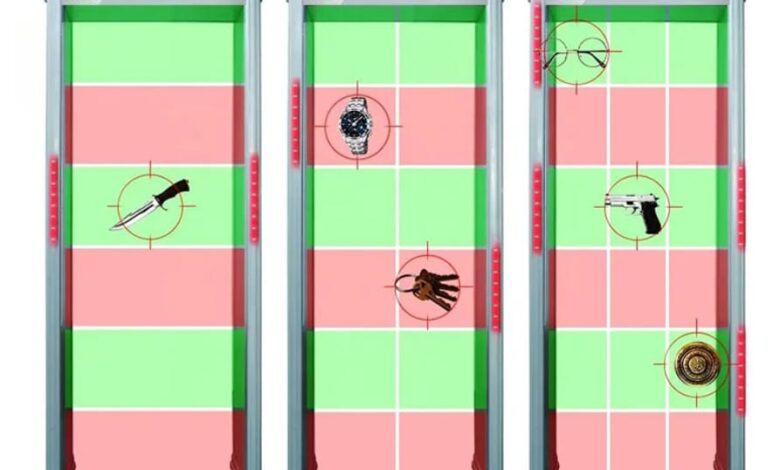Factors to Consider When Selecting the Right Walk-Through Metal Detector for Specific Environments

Walk-Through Metal Detectors serve a crucial role in enhancing security measures in various environments. However, to ensure optimal effectiveness, it is essential to select the right detector that suits the specific needs and requirements of a particular environment. This article explores the factors to consider when selecting the right Walk-Through Metal Detector, ensuring accurate threat detection, operational efficiency, and a seamless security screening process in diverse environments.
1. Detection Requirements:
The primary factor to consider when selecting a Walk-Through Metal Detector is the specific detection requirements of the environment. Different environments may have varying security concerns and threat levels, necessitating detectors with specific detection capabilities. For instance, high-security locations such as airports or government buildings may require detectors with enhanced sensitivity and multi-zone detection capabilities to identify even the smallest metallic objects. Assessing the desired level of detection accuracy and the types of threats being targeted is crucial in determining the appropriate Walk-Through Metal Detector for the environment.
2. Throughput and Flow Rate:
Consideration should be given to the anticipated number of individuals passing through the Walk-Through Metal Detector within a specified timeframe. The detector’s throughput and flow rate capabilities should align with the expected foot traffic. High-traffic environments, such as stadiums or transportation hubs, may require detectors with fast detection and processing speeds to accommodate a large number of people passing through without causing congestion or delays. Assessing the throughput and flow rate requirements is essential to maintain operational efficiency and prevent unnecessary bottlenecks.
3. Size and Installation:
The physical dimensions and installation requirements of a Walk-Through Metal Detector should be carefully considered to ensure a proper fit within the environment. The size of the detector should align with the available space, accounting for factors such as entryway dimensions, furniture, or infrastructure limitations. Additionally, the installation process should be evaluated to determine if any modifications or structural preparations are necessary. Proper planning and consideration of the size and installation requirements will allow for seamless integration of the Walk-Through Metal Detector into the environment.
4. Environmental Factors:
Different environments may present unique environmental factors that can impact the effectiveness and durability of a Walk-Through Metal Detector. For example, outdoor environments may require detectors with weatherproof or vandal-resistant features to withstand harsh weather conditions or potential tampering. Similarly, environments with high electromagnetic interference, such as industrial settings, may require detectors specifically designed to mitigate such interferences. Assessing the environmental factors will ensure that the selected detector can function optimally in the intended environment.
5. User-Friendly Interface:
The user interface and ease of operation of a Walk-Through Metal Detector are crucial considerations, particularly in environments where multiple operators will be responsible for screening. A user-friendly interface with intuitive controls and clear instructions promotes efficient operation and reduces the likelihood of errors or false alarms. Features such as touchscreen displays, easy calibration, and quick start options can enhance the user experience and streamline the screening process.
6. Maintenance and Support:
When selecting a Walk-Through Metal Detector, it is crucial to consider the maintenance requirements and availability of support services. Regular maintenance and calibration are essential to maintain the detector’s accuracy and performance over time. It is advisable to choose a detector that offers easy maintenance procedures and provides access to prompt technical support, ensuring minimal downtime and optimal functionality.
7. Compliance and Regulatory Standards:
Different environments may be subject to specific compliance and regulatory standards when it comes to security screening. It is important to select a Walk-Through Metal Detector that meets the applicable standards and regulations to ensure legal compliance and adherence to security protocols. Factors to consider include compliance with recognized industry standards, local regulations, and any specific requirements set forth by regulatory bodies.
Conclusion:
Selecting the right Walk-Through Metal Detector for specific environments is crucial to ensure effective threat detection and streamlined security screening processes. By considering factors such as detection requirements, throughput and flow rate, size and installation, environmental factors, user-friendly interfaces, maintenance and support, and compliance standards, organizations can make informed decisions and deploy detectors that best fit their unique security needs. Careful selection and implementation of Walk-Through Metal Detectors contribute to a safer and more secure environment, providing peace of mind for both security personnel and individuals passing through the detectors.
Discover the essence of crafting captivating magazine content, delving into the art of storytelling and visual aesthetics. Uncover the secrets to engaging readers through compelling narratives and striking imagery, elevating the impact of each page turn. Master the intricacies of magazine creation to resonate with diverse audiences and leave a lasting impression.



